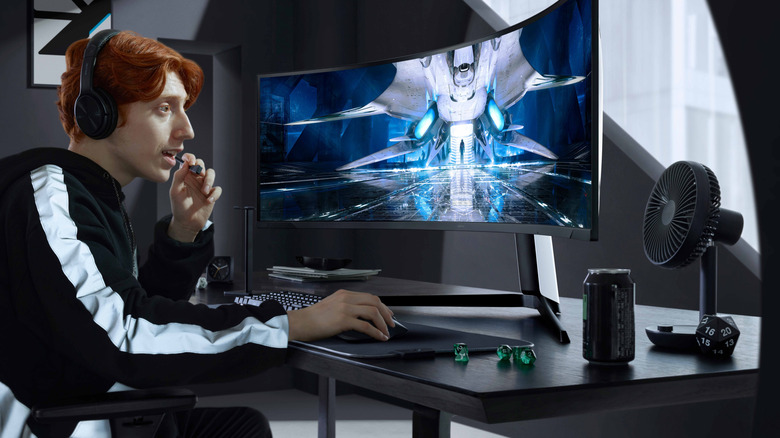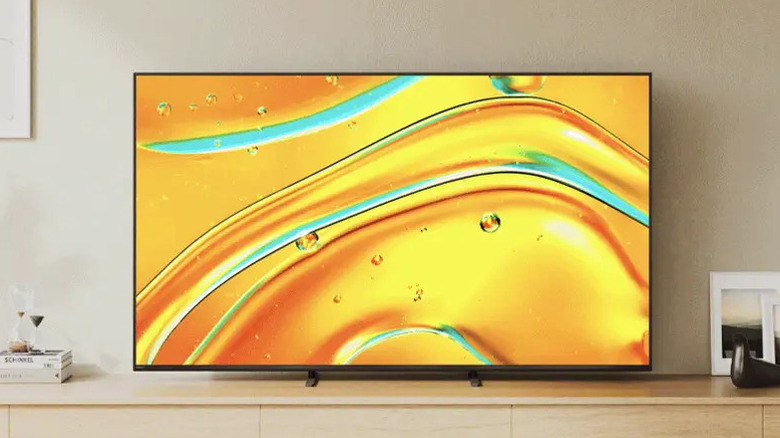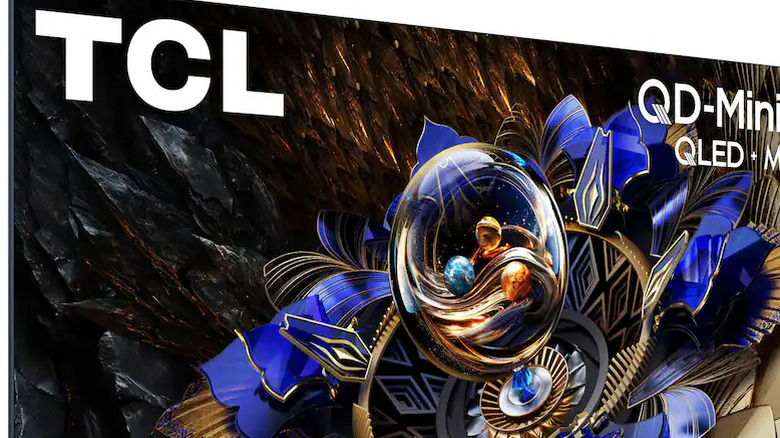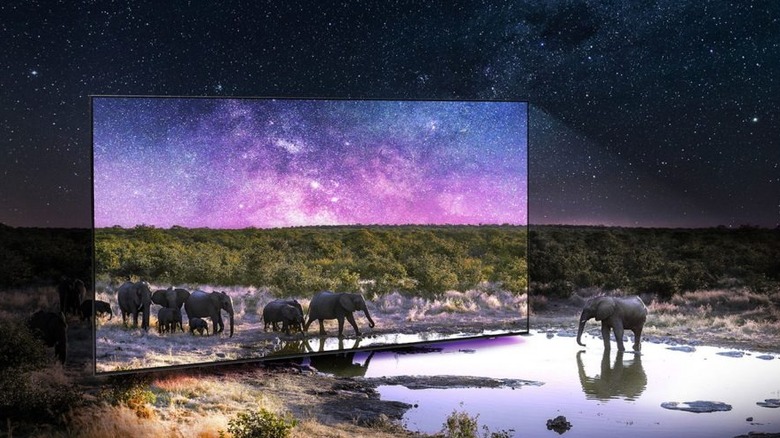Every Type Of HDR Explained (And WhIch To Look For In A TV)
High Dynamic Range (HDR) is one of the most important things to happen in modern television technology. It is a massive step-up in quality and has taken over the market, with formats that span across several different TVs. To put it simply, HDR takes the range of light and dark that a TV can show and expands it to make it more vibrant, detailed, and realistic.
This replaced the older Standard Dynamic Range (SDR), which had its limits that often crushed details in bright areas or dark shadows. Picking a television isn't just about resolution anymore, and supporting one standard over another can give you a different viewing experience. Unfortunately, the HDR ecosystem isn't so simple, and comes with many different formats like HLG, HDR10, Dolby Vision, HDR10+, and even new formats like Dolby Vision 2 and HDR10+ Advanced.
Choosing the right TV can be difficult if you don't understand the acronyms. We'll go over each format and what you should be looking for in a television. That way, you can just look at the letters on the box and know what TV is perfect for your home.
HLG (Hybrid Log-Gamma)
Hybrid Log-Gamma (HLG) is usually tailored for things like streaming or packaged media because it was specifically built to be the broadcast standard for television content. This is a format that the UK's BBC and Japan's NHK worked on together back in 2014. It functions as a transfer that relies on relative gamma curves instead of metadata, which many other HDR formats use.
If you are a cord-cutter and rely heavily on broadcasts, you're going to want an HLG-compatible TV, as that's the format you'll likely be using. Since this is royalty-free, manufacturers can use it without worrying about license fees, and that is why it is supported by most HDR TVs today. Even better, a lot of the cheapest QLEDs you can buy in 2025 are HLG compatible already, so you're saving money, too.
The only competition would be Advanced HDR by Technicolor, but if you're thinking about using a TV for streaming high-quality movies or games, things like this are not your biggest concern. You should be more worried about getting Dolby Vision vs HDR10+, because those are going to be what makes your viewing experience better. HLG and Advanced HDR are more geared toward those who still use satellite.
Advanced HDR by Technicolor
Advanced HDR by Technicolor is looked at as the "other" very smart broadcast format. This is a sophisticated way to deliver HDR content, so it's pretty much neck and neck with HLG. Technically speaking, you can think of it as a package of different formats that are tailored for various uses, like streaming and live broadcasting, but Advanced HDR also uses dynamic metadata.
There are different "flavors" of Advanced HDR. SL-HDR1 is the format that's most like HLG, and comes with backward compatibility. SL-HDR2 gives you the dynamic metadata capabilities that are similar to those found in HDR10+ and Dolby Vision. SL-HDR3 builds on the HLG base, but has dynamic metadata for better performance. That's not to say it's better than HLG; Even though it sounds like it at face value, it's just different.
The smart thing to do is not to choose between HLG and the Technicolor option, but to try to get both. Something you should look for when buying a new TV is a NextGenTV logo on the box, which tells you that it can handle both formats. So if you're a cord cutter, you're getting the best of both and not choosing between the two.
HDR10
The HDR10 Media Profile is the original open standard for HDR video and constitutes the mandatory baseline standard for HDR video. Since it's royalty-free, it has become the base standard almost immediately and is the foundation of the whole HDR ecosystem. HDR10, being older, only uses static metadata, which means a single brightness setting for an entire movie.
HDR10 comes with over a billion colors instead of SDR's 16.7 million. It's a whole upgrade over that older format, and can support peak brightness of up to 10,000 nits, but usually you find TVs maxing out at 4,000. While it is older, you shouldn't look down on any TV because it says it is HDR10 compatible, and it's a setting that you want enabled when you're playing something on the Xbox Series X|S. The truth is that you're likely never going to avoid HDR10 because every other HDR is built on this foundation.
You should stay away from models that only offer HDR10 because we're two generations ahead already, so I wouldn't even get it on sale for under $100. Instead, look for displays that say they come with HDR10+ or Dolby Vision, since that is the modern standard. This is true even if you only want it for streaming, because many streaming services offer better quality for the modern HDR formats.
Dolby Vision
Dolby Vision is a well-known HDR format that has grown to become a leading licensed option. Unfortunately, it is not royalty-free, so some manufacturers chose not to use it due to the licensing fees. However, that cost also comes with stricter quality standards, which generally means you're guaranteed to get a high-quality television with this format. That's one of the big differences between HDR10 and Dolby Vision.
This format uses dynamic metadata, which adjusts to the display's parameters, so brightness and contrast can change scene-by-scene. It can support 12-bit color depth, which is theoretically 68.7 billion colors, a lot more than the standard 10-bit color that HDR10 offers. You're going to find brands like LG, Sony, TCL, Hisense, Panasonic, and Vizio using Dolby Vision, as well as support from streaming services like Netflix and Disney+.
The downside is that this format is not compatible with Samsung, which is the champion of HDR10+, the other format choice. If you don't want to choose a side between HDR10+ and Dolby Vision, get a TV that supports both formats; It's a great investment. I have one, and it was worth every penny because I'm not worried about whether I'm getting the best quality picture over a licensing fee.
HDR10+
HDR10+ is basically the royalty-free answer to Dolby Vision, which Samsung developed alongside Panasonic and 20th Century Fox. While Dolby Vision supports up to 12-bit color depth, the HDR10+ keeps the 10-bit limit found in the original. This format also has dynamic metadata, and in my experience, you're not really seeing much of a difference between the two unless you're criticizing frame-by-frame.
HDR10+ was not an option that was supported by many brands other than Samsung at first, but it now has a respectable lineup of manufacturers that didn't want to support Dolby Vision. Besides Samsung, you have Amazon Fire, Roku, Panasonic, Hisense, TCL, and Philips all making TVs that use it. HDR10+ is supported by nearly 80% of the displays sold globally, so strictly avoiding the standard is difficult.
While we do see the newest generation of standards coming, you shouldn't be worried about getting an HDR10+ or Dolby Vision. These are likely still going to be formats you can use for the next few years without having to worry about that kind of standard dropping. Even some of the cheapest TVs worth buying support both of these technologies, so you don't need to choose if you look hard enough.
Dolby Vision 2 (with a max tier)
Dolby Vision 2 is the next generation of HDR formats, and has an AI-driven picture that adapts to your environment as well as what is on-screen. This is done thanks to the light sense and Automatic Playback Optimization built right into it. So the television automatically tweaks the content display in real-time based on whether the light is on, if there is glare, and the genre of movie you are watching.
It is aimed at those who like how AI-driven upscaling has become because that's a major focus. This is not something I recommend buying into because it is still at the stage of early adopters. You're really just trusting a promise that there will eventually be enough content that supports this format, but it's not there yet, so it's not worth the extra money it costs right now.
The max tier just promises extra features, so it would be something you'd look at if you want the best of the next Dolby Vision generation. However, I think that's just doubling down on a format that we're not sure will be in wide use in a few years. It would be better for your wallet if you stuck to an HDR or Dolby Vision for now, and upgraded when more services upgrade.
HDR10+ Advanced
HDR10+ Advanced is Samsung's answer to Dolby Vision 2, and it is completely royalty-free. Like its competitor, it brings in some cutting-edge, AI-driven features that are designed to optimize your video content. So it will also adjust your output based on your environment and what you are watching, from games to movies, sports, and more.
The Dolby Vision 2 and the HDR10+ have similar features with different names. It's not going to make so much of a difference that you're going to regret one or the other, unless you're going for the max tier for Dolby Vision 2. You're basically committing based on the manufacturer you want to buy a TV from, but I still don't recommend getting this format. Even the best TVs you can buy in 2025 use HDR10+ and Dolby Vision, not this new format.
The reason you don't want to get this and be an early adopter is that its success relies on factors outside your control, and may never take off the way the manufacturer intended. A good example is 8K TVs, which still haven't taken over the market, leaving many with an expensive screen that's only used to play 4K video. I'd say that if you really want to get this, wait for a TV that has both Dolby Vision 2 and HDR10+ Advanced, because then you won't have to choose between the two.







